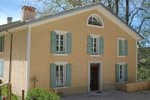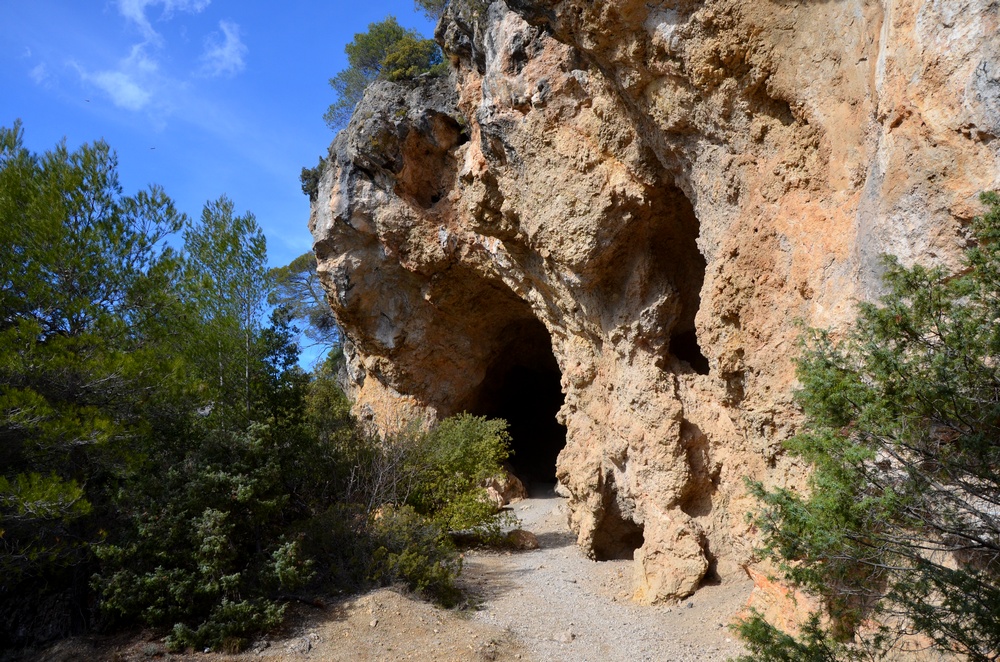
The cave path
A walk that begins in the streets of the village where you have to know how to raise your head to see a lot of heritage wealth. Continuing your walk beyond the ramparts, you will pass under the St Trinité chapel, do not hesitate to visit his tenant, he always has a story to tell. Then you will discover the rocks of Sainte-Marie-Magdeleine and its chapel located in a cave, the oil mill, olive groves, dry stone walls.
11 points of interest
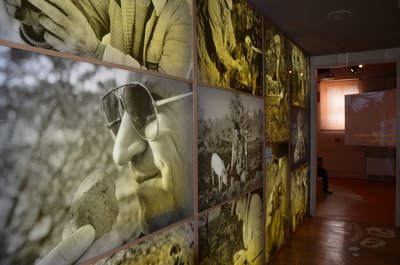
Le musée de la truffe - Stefano Blanc - PNR Verdon  Produits du terroir
Produits du terroirThe truffle house
Provence is a land of truffles, and Aups one of the most emblematic places of its production. Here for a long time, the truffle is cultivated, harvested, venerated, sold, shared, and eaten. The truffle house that was born in 2015 is dedicated to this strange mushroom called "The Black Diamond". In a museum space dedicated to the terroir of Haut-Var during the interactive, fun and educational visit we discover the world of the Truffle, its history, its legends.
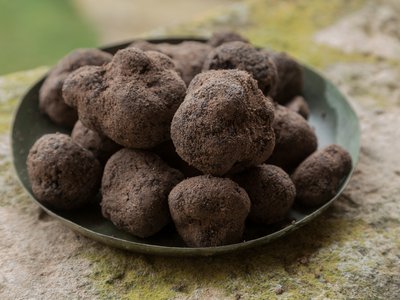
La tuber melanosporum - Pierre Marilly  Produits du terroir
Produits du terroirThe Verdon black gold
Aups is famous throughout the region for its famous and highly anticipated market of the famous black truffle with perfume and incomparable taste, which specialists call Tuber melanosporum and the Provençaux, Rabasse. It takes place every Thursday morning from mid-November to mid-March. It is the most important market of the Var.
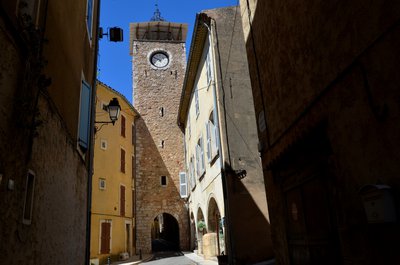
La Tour de l'horloge - Stefano Blanc PNR Verdon  Patrimony and history
Patrimony and historyThe Clock Tower
The clock tower was erected in the sixteenth century, first as a watchtower to protect the village and then served as a prison in safer times. Topped with a wrought iron campanile, inscribed in historical monuments, there is installed on the facade a clock. Inside the campanile is a sundial of great precision dating from 1760 with the motto "Ruris and urbis normal laborum" (I regulate the work of the family and fields).
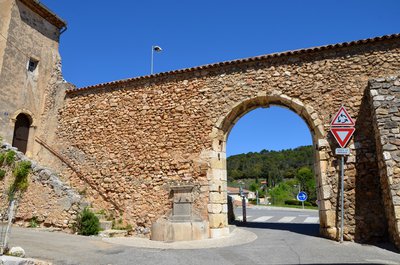
Porte des Aires - Stefano Blanc PNR Verdon  Patrimony and history
Patrimony and historyThe Aires door
The public areas, where the grain was trodden but also where the local tax was levied in kind until the revolution, were often in height, in windy places which allowed to better separate dust and screenings of the grain. They gave their name to this neighbourhood. We are outside the medieval district whose eastern limit is constituted by the street of the Aires at the bottom of which rises the Clock tower.
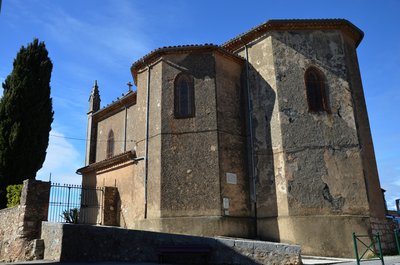
Notre-Dame de Délivrance - Stefano Blanc - PNR Verdon  Patrimony and history
Patrimony and historyThe Chapel of Our Lady of Deliverance
This large chapel, which dominates the agglomeration from a vast terrace, was built in 1852, in a neo-Gothic style. The events relating to the insurrection against the coup d'etat of Louis Napoleon Bonaparte, in 1851, made Aups the "center of the red Var". The order is restored in this year 1852, the prince-president became the Emperor Napoleon III. He amnesties the city which then decides to make this building, thanks to a vast subscription launched among the inhabitants.
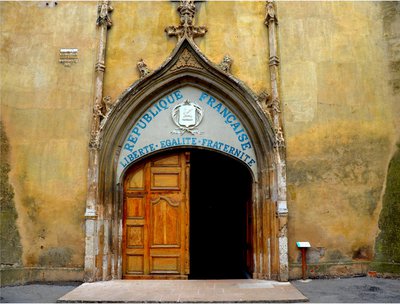
Portail de Saint Pancrace - Stefano Blanc PNR Verdon  Patrimony and history
Patrimony and historyFreedom, Equality, Fraternity
On the pediment is written the motto of the Republicans "Freedom, equality, fraternity" Indeed, the Var insurgents against the coup d'état of Louis Napoleon Bonaparte took refuge in the collegiate Saint-Pancrace during the "Battle of Aups" of 10 December 1851. At the time of the promulgation of the law of separation of the Church and the State in 1905, the Aupsois decided quite naturally like other communes of high Var to affix the motto of the French republic on the portal of their church.
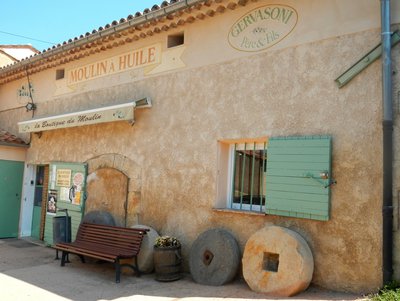
Le moulin oleicole - Stefano Blanc - PNR Verdon  Produits du terroir
Produits du terroirThe Verdon green gold
In many villages there used to be one or more oil mills where people entrusted their harvest to enjoy their "oil". Most disappeared in the early twentieth century, relayed by larger cooperatives. Yet the olive tree, symbol of Provence, was throughout the nineteenth century one of the main cultures of the Var region. It is from the olive oil that is manufactured the famous "Marseille soap" of Savonnerie marseillaises.
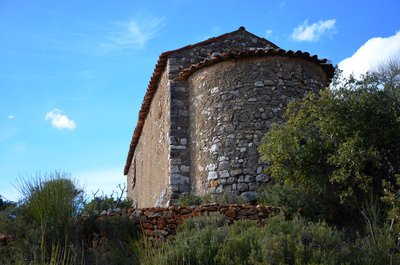
La trinité - Stefano Blanc - PNR Verdon  Patrimony and history
Patrimony and historyHoly Trinity Chapel
Small Chapel of the tenth and eleventh centuries.We do not know much about the Holy Trinity chapel. We can note successive reworkings of its architecture. A double door was pierced on the side. This kind of modification is found in chapels converted into barns. A military marker served as rubble at the base of one of the walls.
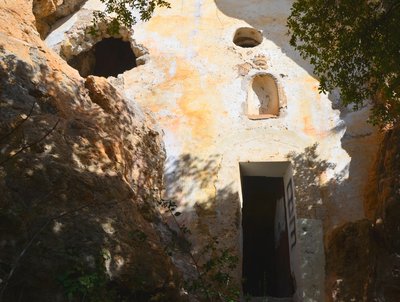
La chapelle rupestre Ste Magdeleine - Stefano Blanc - PNR Verdon  Patrimony and history
Patrimony and historyThe Sainte-Magdeleine chapel
Curious that this chapel, in Christian imagery holy Magdeleine hermit par excellence, remains linked to caves and troglodytism. According to the communal archives, the cave was converted into a chapel in 1635 by the inhabitants of the village. They close this crevice by a wall of facade with door and fenestron First a small place of worship, it becomes a hermitage in 1666.A mass was said there on July 22. Later, it is abandoned like other chapels.
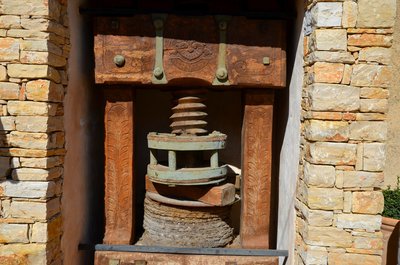
Ancienne presse bois pour l'huile d'olive - Stefano Blanc - PNR Verdon  Produits du terroir
Produits du terroirThe oil mill
There are still mills where everyone can bring their fruits to get a "homemade" oil. The harvest is done in September for green olives, mid-December for the most mature, that is to say the blacks. On the other hand one distinguishes about thirty varieties in all. It takes on average 5 kilos of olives to produce one liter of oil. Here the Gervasoni mill for three generations and dating from 1748 in which we find the stone wheels with wooden gears and hand presses.
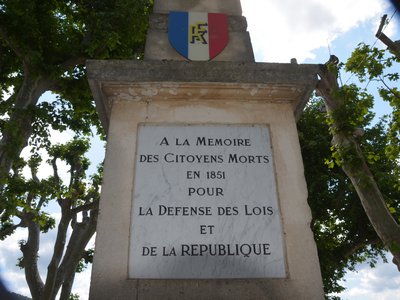
Le monument aux morts de 1851 - Stefano Blanc - PNR Verdon  Patrimony and history
Patrimony and historyAups the insurgents village !
On December 2, 1851, our villages rise up to defend the Republic against the coup d'etat of Louis-Napoleon Bonaparte. Few people remember it. Peasants, bourgeois, artisans took up the weapons. They will be killed, arrested, deported, imprisoned. In Aups, a monument to the dead is erected for these fighters, the place is named Martin Bidouré in tribute to a young man shot twice. So many facts that place the village at the heart of this revolt, provincial and rural.
Description
From the tourist office, pass the St-Pancrace church and walk up Aups through the medieval streets (attention, the yellow markings begins at point (1).
Pass at the foot of the Tour de l'Horloge, follow the Aires street and exit the ramparts through the Aires portal. Walk along the Notre-Dame de la Délivrance chapel and enter the Devensaux rural road on the other side of the road.
1- At 150 m, leave the small road and turn right on chemin de la Trinité. Pass the college, the dirt road is tarred. Climb up to the chapel Sainte-Trinité (10th and 11th centuries), pass below, and join a dirt road to the first caves of Aups. Continue on the flat road for another 300 m to reach, nestled in the wall, the curious Sainte-Magdeleine chapel. Continue the route under the green oaks, walk along a low wall and join the intersection with the Croix des Pins path
2- Follow the path on the right and go down along dry stone walls. Join a small road, continue to descend, pass the buildings of the oil mill and get to the departmental road from Aups to Tourtour. Go back through the Charles Boyer alley to the village.
- Departure : In front of the Tourism Office
- Arrival : In front of the Tourism Office
- Towns crossed : Aups
Forecast
Altimetric profile
Recommandations
Information desks
House of the Verdon Regional Nature Park
Domaine de Valx, 04360 Moustiers-Sainte-Marie
House of the Verdon Regional Nature Park
OT Aups
Place Martin Bidouré , 83630 Aups
Access and parking
Parking :
More information
Report a problem or an error
If you have found an error on this page or if you have noticed any problems during your hike, please report them to us here:

